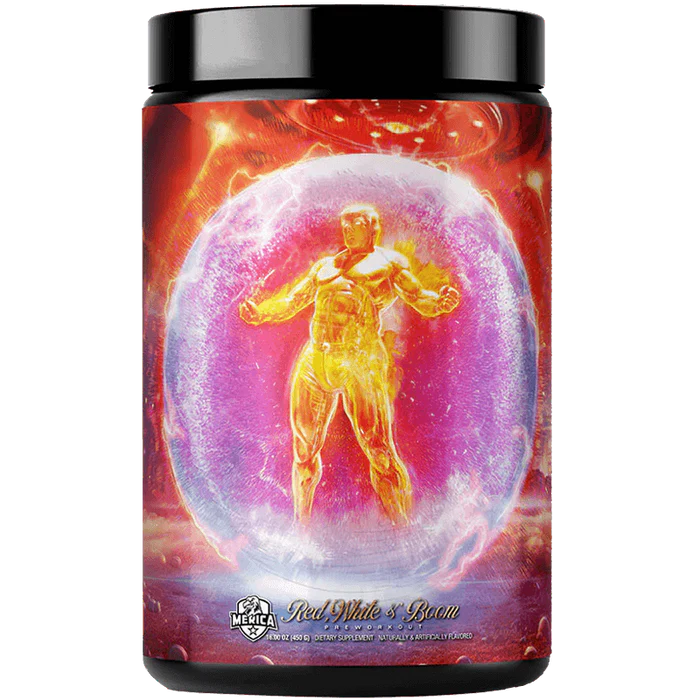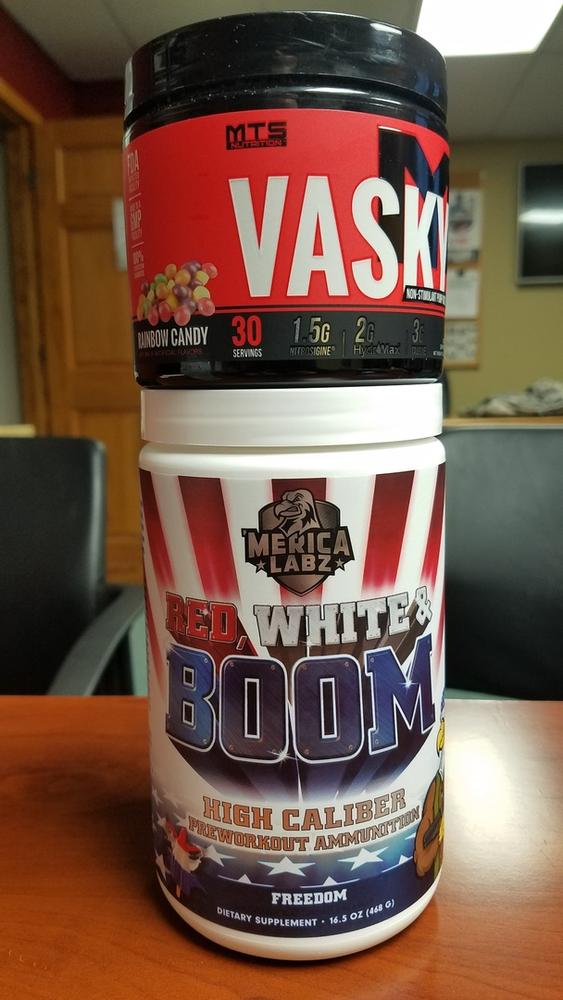
Merica Labz Red, White, & Boom | High-Stim Pre-Workout for Energy, Focus & Pumps
- #1 Best Seller in Merica Labz
- #3 Best Seller in High Stim Pre Workout
- #6 Best Seller in Pre-Workout
Description
Bring the boom to your workout with Merica Labz Red, White, & Boom, the legendary high-stim pre-workout built for serious energy, focus, and performance. This powerful formula ignites your training with explosive intensity, helping you push through fatigue and dominate every rep.
Merica Labz Red, White, & Boom combines caffeine, pump enhancing ingredients, and focus boosting nootropics to deliver next level workouts without the crash. Whether you’re chasing PRs, crushing cardio, or powering through a tough lift, this pre-workout keeps you locked in and energized from start to finish.
With bold flavor profiles and unmatched performance, it’s the ultimate fuel for athletes who want to train hard, stay focused, and perform like a true patriot.
Key Benefits:
- Delivers explosive energy and laser sharp focus
- Enhances muscle pumps and endurance
- Combats fatigue and improves workout intensity
- High-stim formula for serious performance athletes
Unleash your inner freedom fighter with Merica Labz Red, White, & Boom, available now at TigerFitness.com where strength and freedom collide.
















